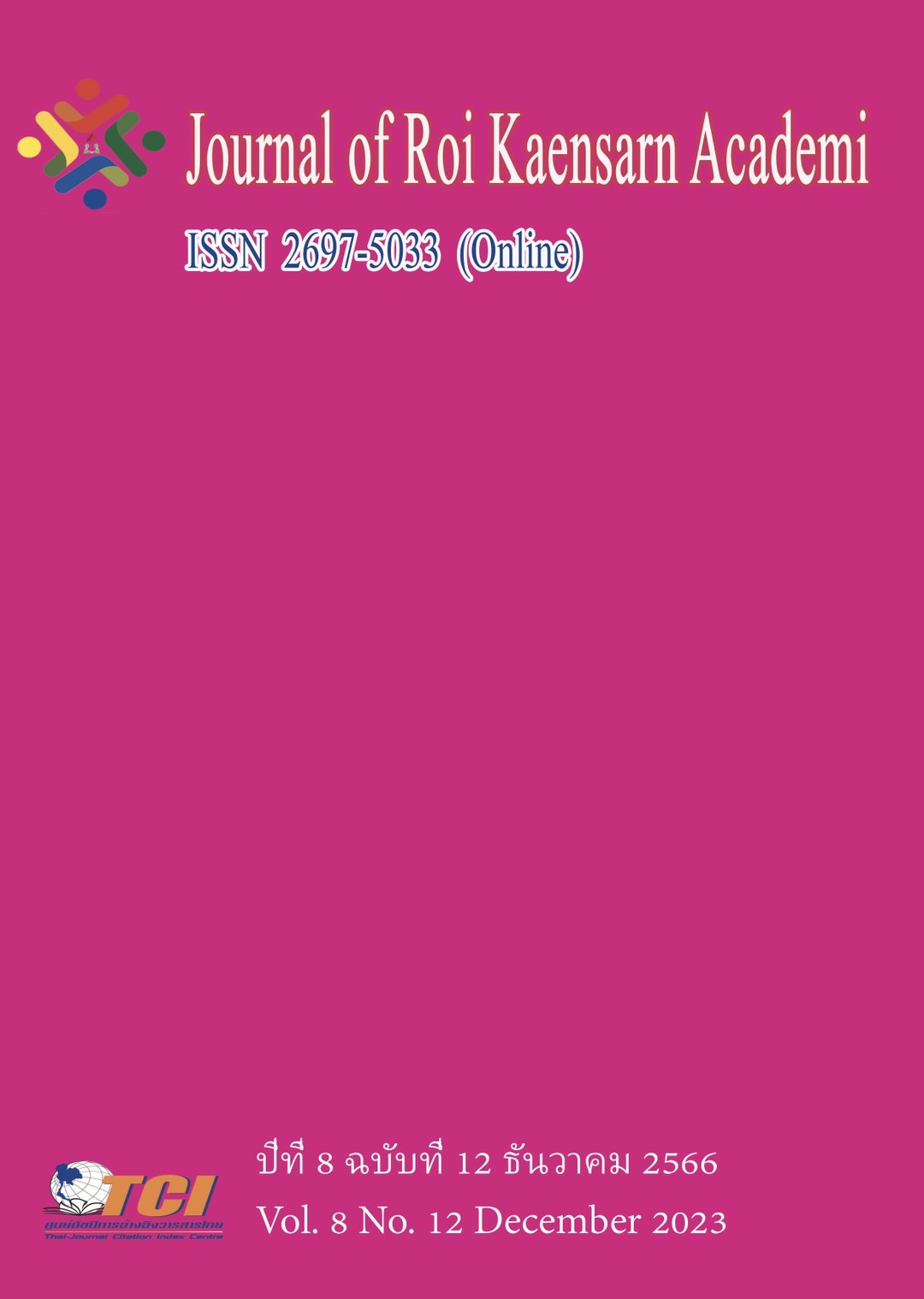The Latent Profile Analysis of E-Learning Acceptance for Faculty of Education Students
Main Article Content
Abstract
This research employed the theoretical framework of the Technology Acceptance Model (TAM) and was conducted following survey research which aimed to aimed to 1) investigate the e-learning acceptance among college students at the faculty of education using a latent profile model 2) to compare the level of intention to use e-learning among the latent classes. The sample consisted of 658 students from faculty of education at Silpakorn University through two-stage random sampling. Research instruments including the e-learning acceptance scale with high reliability ranged between 0.84 to 0.89 were used. Frequency, percentage, mean and standard deviation, Pearson’s correlation coefficient, analysis of variance (ANOVA) and latent profile analysis were applied using R package.
The results of the study were as follows; 1) the e-learning acceptance among college students at the faculty of education using a latent profile model revealed five-latent class model provided the best fit to the data (AIC=6,196, BIC=6,322, Entropy=0.82, BLRT p<0.01). 2) the level of intention to use e-learning across latent classes revealed statistically significant difference in intention to use e-learning between the latent classes (p < 0.05). The high potential online learning class had the highest level of intention to use e-learning. The study results suggest that the Technology Acceptance Model (TAM) is a crucial factor in e-learning acceptance for students.
Article Details
References
ธัชพงศ์ เศรษฐบุตร และอัครเดช เกตุฉ่ำ. (2564). โมเดลความสัมพันธ์เชิงสาเหตุความตั้งใจใช้การเรียนรู้ผ่านสื่ออิเล็กทรอนิกส์ของนักศึกษาในช่วงการระบาดของโรคโควิด 19: การวิเคราะห์โมเดลสมการโครงสร้าง. วารสารวิชาการวิทยาลัยสันตพล. 7 (2), 155-166.
อัครเดช เกตุฉ่ำ และธัชพงศ์ เศรษฐบุตร. (2563). คุณสมบัติทางจิตมิติของแบบวัดความพึงพอใจในชีวิตฉบับภาษาไทยของนักเรียนชั้นมัธยมศึกษาตอนปลาย: การทดสอบความไม่แปรเปลี่ยนระหว่างเพศ. วารสารมนุษยศาสตร์และสังคมศาสตร์มหาวิทยาลัยราชพฤกษ์. 6 (1), 186-197.
อัครเดช เกตุฉ่ำ. (2564). การทดสอบอิทธิพลกำกับของเพศต่อโมเดลการยอมรับการเรียนรู้ผ่านสื่ออิเล็กทรอนิกส์ของนักศึกษา. วารสารศิลปากรศึกษาศาสตร์วิจัย. 13 (2), 461-479.
Aguilera-Hermida, A. P. (2020). College students’ use and acceptance of emergency online learning due to Covid-19. International Journal of Educational Research Open, 1, Article 100011. https://doi.org/10.1016/j.ijedro.2020.100011
Al-Azawei, A., Parslow, P., & Lundqvist, K. (2017). Investigating the Effect of Learning Styles in a Blended E-learning System: An Extension of the Technology Acceptance Model (TAM). Australasian Journal of Educational Technology, 33 (2), 1-23.
Al-Okaily, M., Alqudah, H., Matar, A., Lutfi, A. A., & Taamneh, A. (2020). Impact of Covid-19 Pandemic on Acceptance of E-learning System in Jordan: A Case of Transforming the Traditional Education Systems. Humanities and social Sciences Review, 6(4), 840-851.
Davis, F. D. (1989). Perceived Usefulness, Perceived Ease of Use, and User Acceptance of Information Technology. MIS Quarterly, 13(3), 319-340.
Davis, F. D., Bagozzi, R. P., & Warshaw, P. R. (1989). User Acceptance of Computer Technology: A Comparison of Two Theoretical Models. Management Science, 35(8), 982-1003.
Hubbard, J. A., Smith, M. A., & Rubin, R. M. (2013). Use of latent profile analysis to assess the validity of a peer-rejected group of children. Journal of Clinical Child & Adolescent Psychology, 42(6), 843-854.
Karpouzas, G. A., Strand, V., & Ormseth, S. R. (2018). Latent profile analysis approach to the relationship between patient and physician global assessments of rheumatoid arthritis activity. RMD open, 4(1), 1-10. doi:10.1136/rmdopen-2018-000695
Sukendro, S., Habibi, A., Khaeruddin, K., Indrayana, B., Syahruddin, S., Makadada, F. A., & Hakim, H. (2020). Using an Extended Technology Acceptance Model to Understand Students’ Use of E-learning During Covid-19: Indonesian Sport Science Education Context. Heliyon, 6(11), e05410.
Tarhini, A., Hone, K., & Liu, X. (2014). Measuring the Moderating Effect of Gender and Age on E-learning Acceptance in England: A Structural Equation Modeling Approach for an Extended Technology Acceptance Model. Journal of Educational Computing Research, 51(2), 163-184.
Tein, J. Y., Coxe, S., & Cham, H. (2013). Statistical Power to Detect the Correct Number of Classes in Latent Profile Analysis. Structural equation modeling: a multidisciplinary journal, 20(4), 640-657.
Weller, B. E., Bowen, N. K., & Faubert, S. J. (2020). Latent class analysis: a guideto best practice. Journal of Black Psychology, 46(4), 287-311.
Yu, M., Chasson, G. S., Wang, M., Zhu, Y., Xu, Q., & Wang, J. (2018). The latent profile analysis of Chinese adolescents’ anxiety: Examination and validation. Journal of Anxiety Disorders, 59, 74–81. https://doi.org/10.1016/j.janxdis.2018.09.005
